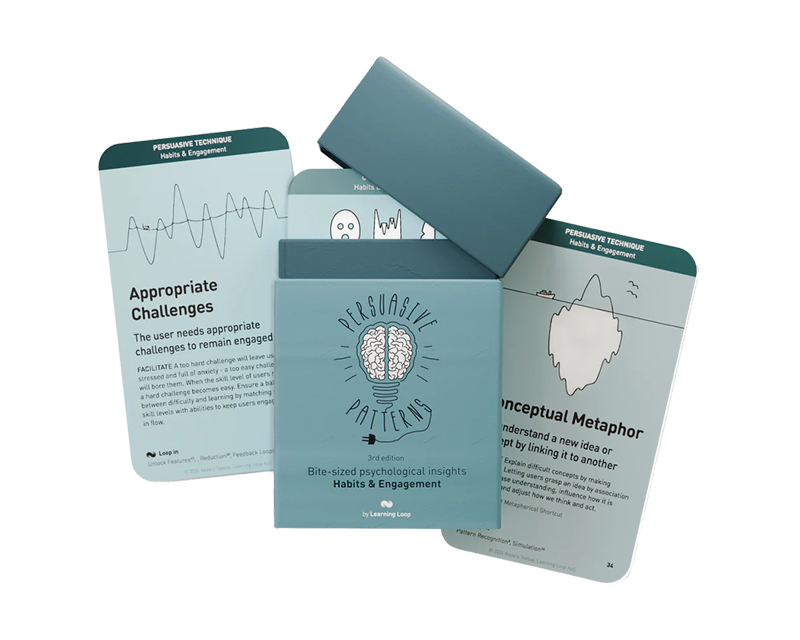Persuasive Patterns: Training, Temptation
Unlock Features
Reward specific behaviors by enabling new capabilities

By rewarding users by granting them access to additional functionalities as they achieve certain predefined behaviors or milestones within a product or service, user engagement and investment can be significantly increased. As users progress, new features become available, which can enhance their experience, provide further value, and encourage continued use. This technique is particularly effective in maintaining long-term user engagement, as it creates a sense of achievement and anticipation for what’s next.
In a cooking class where students begin by learning simple recipes, their skills gradiually improve as the instructor introduces them to more complex dishes. Each new dish they learn unlocks ingredients and equipment previously unavailable to them. This progression not only maintains the students’ interest but also increases their cooking proficiency, as they are only introduced to more challenging tasks once they’ve mastered the basics.
Similarly, in a digital learning platform, users might start with basic tutorials on a subject such as programming. As users complete each tutorial, the platform unlocks more advanced topics and tools. For example, a beginner might start with simple HTML, and upon completion, access to CSS lessons is unlocked, eventually leading to more complex JavaScript tutorials.
Both scenarios utilize the Unlock Features pattern to foster continuous engagement by progressively revealing more content. This method ensures that learners are neither overwhelmed at the start nor under-challenged as they advance, maintaining an optimal learning curve and motivation. This approach is deeply rooted in educational psychology, which suggests that scaffolded learning—where students progressively build on prior knowledge—enhances comprehension and retention.
The study
One of the foundational studies examining the impact of unlocking features in digital platforms was conducted by Anderson et al. (2010), which analyzed user engagement in an online learning environment. The study found that when users were rewarded with new features and content upon completing specific tasks, their motivation and engagement levels significantly increased. Importantly, the study highlighted that such rewards not only kept users engaged longer but also improved their learning outcomes by providing them with a sense of progression and achievement.
Anderson, T., Schlosser, C., & Simonson, M. (2010). Distances are just a click away: The impact of reward systems in online education. Journal of Interactive Online Learning, 9(3), 228-241.
The technique of Unlocking Features has its roots in both video game design and behavioral psychology. Historically, this pattern was first prominently observed in video games in the late 20th century, where players would unlock levels, abilities, or new content as rewards for achieving certain milestones. This was designed to increase player engagement and retention by continuously offering fresh content and challenges. Over time, the application of this concept expanded into various digital and non-digital products, evolving with the rise of gamification in educational and productivity software during the early 21st century.
In parallel, behavioral psychology began to recognize and formalize the impact of reward systems on motivation and behavior modification, further supporting the integration of unlockable features into broader contexts. These developments mirrored advancements in technology and user experience design, where personalized, progressive user journeys became crucial for engagement.
The Unlock Features pattern is now applied more broadly than just in video games. It leverages powerful psychological principles to enhance user engagement and motivation, particularly through the lenses of operant conditioning and self-determination theory.
Developed by B.F. Skinner, operant conditioning posits that behaviors can be shaped by their consequences. In the world of digital products, this principle can be applied by rewarding users with new capabilities or features when they perform desired actions. This form of positive reinforcement increases the likelihood that these behaviors will be repeated, as users learn that certain actions lead to valuable rewards. This makes the process of feature unlocking not just a reward system, but a method of shaping user behavior and increasing product interaction.
Proposed by Deci and Ryan, self-determination theory complements the operant conditioning framework by emphasizing the roles of autonomy, competence, and relatedness. Unlocking features supports this theory by:
- Autonomy
Giving users control over their experience through the ability to unlock new tools and options. - Competence
Providing tangible evidence of users’ skills and achievements as they progress. - Relatedness
Enhancing users’ connection to the community or service by integrating them deeper into the system’s environment.
This synergy between providing competence through achievements and enhancing autonomy through new capabilities is crucial for fostering intrinsic motivation, deeply engaging users, and making them feel valued and capable within the digital ecosystem.
As users’ proficiency with a product increases, initially challenging tasks may become mundane. Unlocking advanced features caters to the evolving skills of users, maintaining engagement by continuously matching task difficulty with skill level. This not only prevents boredom but encourages a journey of growth and discovery.
A few key patterns are in play:
- Loss Aversion and the Endowment Effect
Once users invest time and effort into unlocking features, they begin to value these features more significantly – a phenomenon supported by the endowment effect. The features earned are perceived as more valuable than those not yet acquired, amplifying users’ commitment to the platform. Loss aversion further motivates users to continue engaging with the website to avoid losing the status and capabilities they have gained. - Social Proof
The higher status and power users gain from unlocked features can serve as social proof of their expertise and reliability within the community. This not only increases trust among users but can also lead to real-world recognition and opportunities, as demonstrated by companies like Google, which have considered individuals’ contributions and status on platforms like Stack Overflow during hiring processes.
Together, these elements illustrate why Unlock Features is a highly effective pattern in digital product design. It not only enhances the user experience by making it more rewarding and tailored but also leverages fundamental human needs and behavioral economics to maximize user retention and satisfaction. By understanding and applying these principles, designers and developers can create more engaging, motivating, and sustainable user interactions.
Designing products with the promise to Unlock Features
As you apply the Unlock Features pattern, make sure that the new capabilities you are using as a lure are both rewarding and relevant to the user’s journey. The features unlocked should always be desirable and useful, aligning with the user’s goals and the overall purpose of the product. This alignment ensures that the new capabilities are not just novel but also beneficial, enhancing the user’s ability to achieve their objectives.
The first thing you want to decide on is which criteria will unlock what new features. In a fitness app, for example, you might allow users to access a diet planning tool only after they have logged a certain number of workouts. This links desired actions directly with rewards, reinforcing the target behavior and making the feature unlock feel like a genuine achievement. This approach not only motivates users but also keeps them engaged with clear goals.
Having said that, your unlocks will have little effect unless they are tied to fit the users’ objectives. In educational apps, this might mean users can access advanced lessons only after mastering foundational content. This alignment helps maintain motivation and provides users with a clear, rewarding progression path that directly supports their learning or usage goals.
While Unlocking Features can be a powerful reward, you want to avoid overwhelming users by introducing new features progressively. This helps keep the learning curve manageable and ensures that users are ready for each new capability as it becomes available. By pacing the introduction of new features, you help users build competence and confidence. Ensure that the unlocked features are integrated naturally into the user’s flow within the product. Abrupt or disjointed feature unlocks can disrupt the user experience rather than enhance it.
Use visual tools like progress bars or achievement markers to illustrate how close users are to unlocking a new feature. These indicators make progress tangible and maintain user interest by clearly showing the rewards that lie ahead for their efforts.
When a user unlocks a feature, provide instant feedback that celebrates their achievement. This could be through an on-screen notification, an email, or even an in-app celebration. Immediate recognition not only rewards the user but also reinforces the behaviors that led to the unlock, encouraging further interaction.
Keeping the right balance
It’s crucial to balance the difficulty of the tasks required to unlock new features with the user’s ability level - keeping to Appropriate Challenges. If a feature is too easy to unlock, it won’t feel rewarding; if it’s too hard, it could lead to frustration and disengagement. Adjust these challenges as you gather more data on user behavior and preferences. As features are unlocked, the complexity can increase. This helps to match the user’s growing proficiency and keeps the user challenged but not overwhelmed.
When users see the value of what they’ve unlocked, their satisfaction and engagement with the product increase. So make sure users understand the benefits of the new features they unlock. This can be done through tutorials, tooltips, direct benefits visible in the product’s functionality – or by highlighting other users (Social Proof) that managed to Unlock a Feature. Highlighting users who have successfully unlocked features can serve as motivation for others. This not only demonstrates the attainability of these rewards but also adds an element of social proof that can drive others to engage more deeply with your product.
Use the unlockable features to promote ongoing interaction. For instance, in social platforms or community-driven sites, rewarding users with greater visibility or moderation capabilities can encourage them to contribute quality content regularly.
Guarding against potential pitfalls
Inevitably, some users will seek to exploit incentive systems for personal or financial gain. This leads to the implementation of complex algorithms designed to prevent such abuses. Despite these efforts, the potential for gaming the system cannot be entirely eliminated. Rather than fostering community and cooperation, point systems may inadvertently encourage unscrupulous behavior as users compete for rewards.
In mature communities, disparities in user status can create significant barriers for newcomers. Long-standing users accumulate benefits that enhance their visibility and influence, often overshadowing even superior contributions from newer members. This dynamic can deter new user engagement and stifle fresh input.
Users may become desensitized to rewards over time, diminishing the initial excitement and engagement driven by earlier incentives. To combat this, designers can escalate the value of rewards in line with user progression, maintaining interest and commitment. Alternatively, introducing variability in rewards—making them unpredictable and random—can sustain user engagement by continuously reintroducing the element of surprise.
What happens when there are no more features to unlock? Does the experience lose its allure once the “game” is perceived as “beaten”? To ensure longevity, the design should allow the product to remain engaging even after all features have been unlocked. If continual engagement is the goal, consider dynamically modifying available features based on user activity or inactivity, though this approach requires careful implementation to avoid alienating users.
Ethical recommendations
While effective, this pattern can be used unethically. It may lead to creating addictive loops where users are manipulated into continuous engagement without true user benefit. For instance, features might be gated not to enhance user experience but to artificially prolong engagement, increasing exposure to advertisements or encouraging unnecessary purchases. Such practices can exploit user psychology, fostering dependence on the platform by continuously moving the goalposts for rewards.
To ensure ethical application of the “Unlock Features” pattern, consider the following best practices:
- Be transparent
Clearly communicate how and when features will be unlocked. Users should understand what behaviors or milestones are required to gain access to new capabilities. This transparency helps to build trust and sets clear expectations. - Align with user values
Make sure that the features unlocked genuinely add value to the user’s experience and are not just designed to maximize platform dependency. Each unlock should meaningfully contribute to the user’s goals and satisfaction. - Promote fair access
Design the unlocking criteria to be fair and achievable for all user segments. Avoid creating disproportionate advantages for certain users that could discourage or disadvantage others, particularly new or less active users. - Do not promote compulsive behaviors
Monitor user interactions to ensure that the drive to unlock features does not encourage compulsive or harmful behaviors. Offering occasional breaks or reminders for users to reflect on their usage can help maintain a healthy engagement level. - Design ethical rewards systems
Implement a rewards system that does not solely capitalize on the user’s efforts but also rewards them in ways that are ethical and supportive of their overall well-being.
Real life Unlock Features examples
Duolingo
Uses the Unlock Features pattern by allowing users to access new levels and languages only after completing prior lessons, which keeps learners engaged and progressing.
Fitbit
Encourages physical activity by unlocking badges and challenges as users hit new milestones in their fitness journey, providing ongoing motivation.
Hacker News
The startup community uses karma points as a reward system where users unlock features based on points earned through engagement. For instance, 10 points allow users to upvote comments, while 250 points let users customize the top bar. This system motivates ongoing participation and content quality.
Trigger Questions
- Do our unlocked features align with the goals and motivations of our target users?
- How can we simplify the understanding of what behaviors unlock features?
- Are the rewards we provide compelling enough to motivate continued user engagement?
- At what points in the user journey should new features be unlocked to maximize impact?
- How do we ensure that users are aware they have unlocked new features?
- How can we balance the challenge of unlocking features to maintain engagement without causing frustration?
Pairings
Unlock Features + Rewards + Achievements
Combining Unlock Features with Rewards leverages both instant gratification and long-term goals. For example, a learning platform might unlock advanced tutorials as rewards for completing foundational courses, thereby integrating achievements with new capabilities.

Reward specific behaviors by enabling new capabilities

Use rewards to encourage continuation of wanted behavior

We are engaged by activities in which meaningful achievements are recognized
Unlock Features + Feedback Loops
This involves providing users immediate feedback when they unlock a feature. It reinforces the behavior that led to the unlock and keeps users engaged. In a productivity app, feedback loops could notify users of new tools or functions they’ve gained access to after reaching certain milestones.

Reward specific behaviors by enabling new capabilities
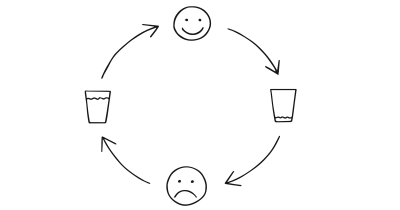
We are influenced by information that provides clarity on our actions
Unlock Features + Goal-Gradient Effect
As users progress towards a goal, their motivation increases. “Unlock Features” can be spaced along this gradient to provide continuous motivation, such as a fitness app unlocking new exercise regimes as users meet fitness benchmarks.

Reward specific behaviors by enabling new capabilities
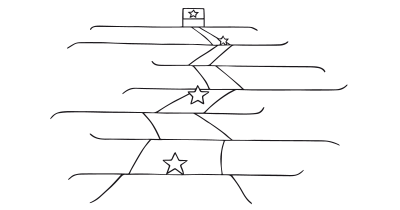
Our motivation increases as we move closer to a goal
Unlock Features + Status + Levels
In social platforms or gaming environments, unlocking features can elevate a user’s status or level within the community, offering more advanced tools or options that enhance their influence or capabilities on the platform.

Reward specific behaviors by enabling new capabilities

We constantly look to how our actions improve or impair how others see us

Use levels to communicate progress and gauge users' personal development
Unlock Features + Periodic Events
Timing feature unlocks to coincide with special events or milestones can create a compelling user experience. For instance, a digital art software might unlock seasonal brushes or tools that users can access only after participating in holiday-themed challenges.

Reward specific behaviors by enabling new capabilities

Recurring events help build up anticipation, belonging, and sustained interest
Unlock Features + Autonomy Bias
Users tend to favor situations where they can control their actions and outcomes. Pairing Unlock Features with autonomy bias involves giving users choices about what features to unlock based on their preferences or behavior. This could be done in educational platforms where learners choose which advanced modules to unlock based on their interests after completing foundational courses.

Reward specific behaviors by enabling new capabilities
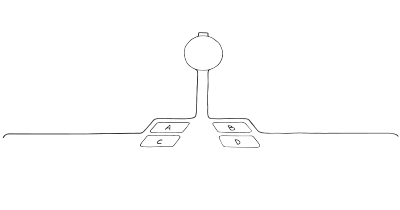
We strive to feel in control
Unlock Features + Curiosity Effect
This involves piquing users’ curiosity to keep them engaged. By gradually revealing what features can be unlocked next, you can keep users intrigued and motivated to discover what’s coming. This approach works well in games and learning apps where users are compelled to continue to uncover more content.

Reward specific behaviors by enabling new capabilities
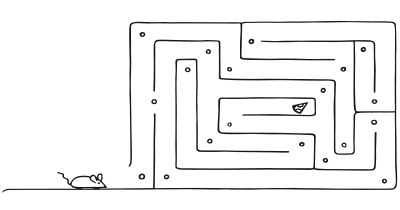
We crave more when teased with a small bit of interesting information
Unlock Features + Social Proof
Integrating social proof with Unlock Features involves showing users that others in their network or user community have unlocked certain features and benefited from them. This can encourage users to engage in the behaviors necessary to unlock these features themselves. For example, displaying testimonials or case studies within the app from users who have successfully unlocked and used new features can motivate others to follow.

Reward specific behaviors by enabling new capabilities

We assume the actions of others in new or unfamiliar situations
Unlock Features + Endowed Progress Effect
This pattern creates a perception that users have already made progress towards a goal, which increases their likelihood of completing it. In the context of unlocking features, you might show users a progress bar that starts partially filled. This can make the journey toward unlocking new features feel shorter and more attainable.

Reward specific behaviors by enabling new capabilities

Early help speeds up goal achievement
Unlock Features + Temptation Bundling
Pairing a task that users need to do (like completing a module in an educational app) with a task they want to do (like accessing a fun, interactive feature) can make the experience more enjoyable and engaging. For example, users could unlock a highly desirable interactive simulation only after completing certain training modules, bundling the need to learn with the temptation to play.

Reward specific behaviors by enabling new capabilities

Engaging in hard tasks is more likely when coupled with something tempting
A brainstorming tool packed with tactics from psychology that will help you build lasting habits, facilitate behavioral commitment, build lasting habits, and understand the human mind. It is presented in a manner easily referenced and used as a brainstorming tool.
Get your deck!- Flow: The Psychology of Optimal Experience by Csikszentmihalyi
- Toward a positive theory of consumer choice by Thaler
- Anderson, T., Schlosser, C., & Simonson, M. (2010). Distances are just a click away: The impact of reward systems in online education. Journal of Interactive Online Learning, 9(3), 228-241.
- Vygotsky, L. S. (1978). Mind in Society: The Development of Higher Psychological Processes. Cambridge, MA: Harvard University Press.
- Kohn, A. (1993). Punished by Rewards: The Trouble with Gold Stars, Incentive Plans, A's, Praise, and Other Bribes. Boston: Houghton Mifflin.
- Vallerand, R. J., & Ratelle, C. F. (2002). Intrinsic and extrinsic motivation: A hierarchical model. Review of Educational Research, 72(3), 309-333.
- Deci, E. L., & Ryan, R. M. (2000). The "what" and "why" of goal pursuits: Human needs and the self-determination of behavior. Psychological Inquiry, 11(4), 227-268.
- Locke, E. A., & Latham, G. P. (2002). Building a practically useful theory of goal setting and task motivation. American Psychologist, 57(9), 705-717.
- Kluger, A. N., & DeNisi, A. (1996). The effects of feedback interventions on performance: A historical review, a meta-analysis, and a preliminary feedback intervention theory. Psychological Bulletin, 119(2), 254-284.
